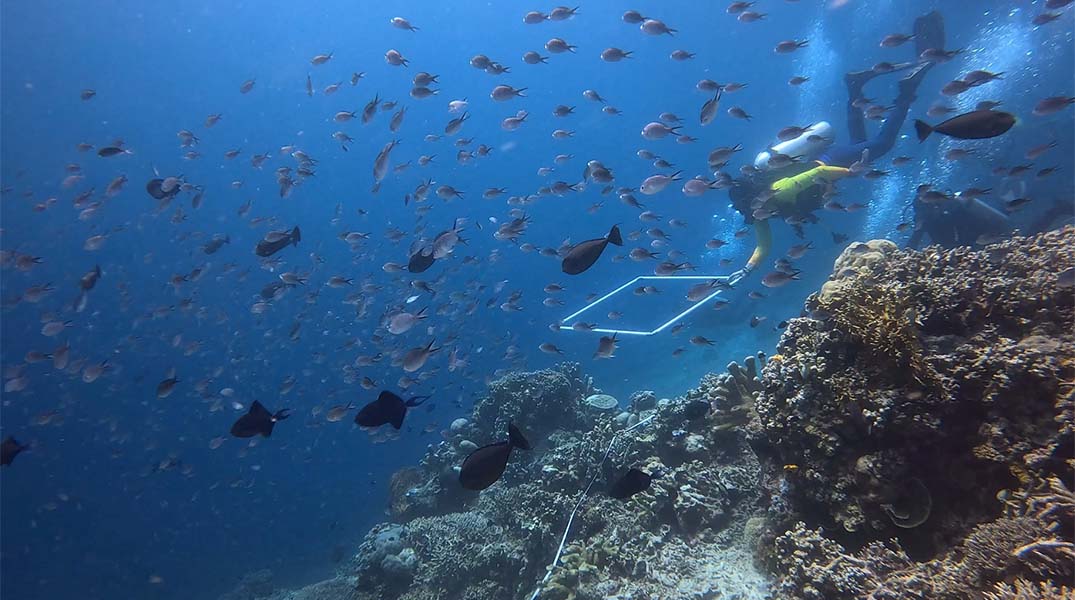The world is currently experiencing its fourth global coral bleaching event, according to National Oceanic and Atmospheric Administration (NOAA) scientists and the network of global coral reef scientists aligned to the International Coral Reef Initiative (ICRI).
This is the second coral bleach event in the last 10 years.
Bleaching-level heat stress, caused by prolonged increases in anomalous ocean temperatures, as remotely monitored and predicted by NOAA’s Coral Reef Watch (CRW), has – and continues to be – extensive across the Atlantic, Pacific, and Indian Oceans.
“From February 2023 to April 2024, significant coral bleaching has been documented in both the Northern and Southern Hemispheres of each major ocean basin,” says Derek Manzello, PhD, the NOAA CRW coordinator.
Mass bleaching of coral reefs, since early 2023, has been confirmed in at least 53 countries, territories, and local economies, including Florida, the Caribbean, the Eastern Tropical Pacific (including Mexico, El Salvador, Costa Rica, Panama, and Colombia), Australia’s Great Barrier Reef, large areas of the South Pacific (including Fiji, Vanuatu, Tuvalu, Kiribati, and the Samoas), the Red Sea (including the Gulf of Aqaba), the Persian Gulf, and the Gulf of Aden.
Bleaching must be confirmed within each Ocean basin to make a final determination of a global bleaching event. Reports have now been confirmed of widespread bleaching across parts of the Western Indian Ocean, including Tanzania, Kenya, Mauritius, the Seychelles, Tromelin, Mayotte, and off the western coast of Indonesia.
Reports also account for widespread bleaching across parts of the south Atlantic, along the northeast coasts of Brazil.
“As the world’s oceans continue to warm, coral bleaching is becoming more frequent and severe,” Manzello says. “When these events are sufficiently severe or prolonged, they can cause coral mortality, which can negatively impact the goods and services coral reefs provide that people depend on for their livelihoods.”
Where coral bleaching results in mortality, especially on a widespread scale, it impacts economies, livelihoods, food security, and more.
However, coral bleaching does not always lead to coral death. If the stress driving the bleaching diminishes, corals can recover, with reefs maintaining their biodiversity and continuing to provide the ecosystem services that we rely on.
“Climate model predictions for coral reefs have been suggesting, for years, that bleaching impacts would increase in frequency and magnitude as the oceans warm,” says Jennifer Koss, director of NOAA’s Coral Reef Conservation Program (CRCP).
The global event requires global action. The ICRI, a partnership of 101 international members, currently co-chaired by NOAA and the US Department of State, applies resilience-based management actions for coral reefs.
In response to the three previous global bleaching events as well as regional and local events, ICRI and its members have advanced coral interventions and restoration in the face of climate change. ICRI develops, and shares, best practices for the effective management of coral reefs through the implementation of its action plan.
NOAA has incorporated resilience-based management practices, increasing the emphasis on coral restoration, into its 2018 strategic plan, and funded a National Academies of Sciences’ study, leading to the publication of the 2019 Interventions to Increase the Resilience of Coral Reefs.
Koss says: “We are on the frontlines of coral reef research, management, and restoration, and are actively and aggressively implementing the recommendations of the 2019 Interventions Report.”
Global bleaching events do not affect all coral reefs equally and require a suite of global, regional, and local interventions. This emphasises the importance of regularly monitoring coral reef ecosystems and not just during bleaching events.
Dr Emily Darling, director of coral reefs at the Wildlife Conservation Society (WCS), comments: “Temperatures are off the charts. While many corals are suffering from extreme heat stress and bleaching, some locations and species show different types of natural resilience. Finding and conserving these priority coral reefs are critical to any global strategy to safeguard the planet’s oceans and blue economies.”
Last year, new science led by WCS identified three types of climate-resilient coral reefs that can defy the odds and resist bleaching, even during mass bleaching events:
* Avoidance reefs are located in rare underwater ‘cool spots’ and have been able to mostly avoid the impacts of warm water events.
* Resistance reefs have evolved adaptations that allow their corals to take warm water events in stride, defying bleaching and other impacts.
* Recovery reefs may bleach during warm water events or be damaged by storms, but they are able to rapidly recover – growing back in record time.
Networks such as the Global Coral Reef Monitoring Network, an operational network of ICRI, and the US Coral Reef Task Force, provide mechanisms for reporting on the impact of bleaching on the World’s coral reefs, alongside regional bleaching observation networks.
“Long-term data on of coral reef condition can put events like this into context,” says Dr Britta Schaffelke, manager: international partnership at the Australian Institute of Marine Science and global co-ordinator of the GCRMN. “They allow us to quantify coral mortality, track recovery, and identify areas that don’t recover naturally and may need further protection or a helping hand through innovative interventions.”
To share key messages and resources about coral bleaching, its impacts, causes and solutions currently being implemented and developed, ICRI has developed the “Coral Bleaching Hub” to support responses, policy and planning, and encourage global co-operation.
Featured picture: In March 2024, the Wildlife Conservation Society (WCS) trained 30 scientists from across the Coral Triangle in simple field methods to measure coral bleaching and identify climate resilient coral reefs. Working together, scientists can improve forecasts of climate resilient coral reefs that are critical to global conservation efforts such as protecting 30% of the world’s oceans by 2030.
Credit: Emily Darling / WCS

